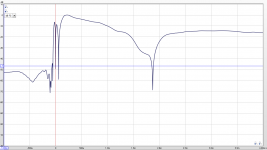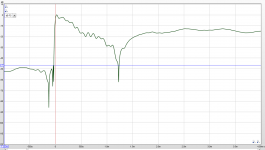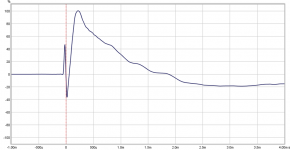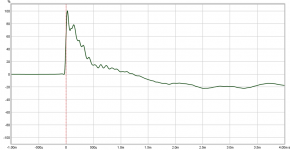Data?
Inference. Evolution has mostly eliminated any humans not capable of detecting un-natural/un-normal audio events.
Like many things audio, the lit is highly devoid of real scientific tests of what the ear/brain can and cannot detect.
Google finds this paper by AMR (who have a vested interest, like a growing number of manufacturers producing product with low levels of pre-ring) which at least outlines the issue.
http://www.amr-audio.co.uk/large_image/Tech Paper 3 - Ringing.pdf
dave
Inference. Evolution has mostly eliminated any humans not capable of detecting un-natural/un-normal audio events.
Like many things audio, the lit is highly devoid of real scientific tests of what the ear/brain can and cannot detect.
Google finds this paper by AMR (who have a vested interest, like a growing number of manufacturers producing product with low levels of pre-ring) which at least outlines the issue.
http://www.amr-audio.co.uk/large_image/Tech Paper 3 - Ringing.pdf
dave
Digital filters can also be done without any pre-ringing. E.g.: IIR filters. It's mostly just FIR filters that people use indiscriminately. I have a hunch that most of the complaints about digital filter weirdness are due to bad implementation and gaps in understanding.
The classic example is of the temptation to do Brick Wall filters, not realising that there will be metallic ringing that is only cancelled out at some sweet spot where the phases align. Similarly, attempting to fix everything from baffle edge resonances to on-axis cone break-up or even echoes, accidentally making it worse off-axis.
It is still pre-ringing. something that is very unnatural, and hence will stand-out to the ear-brain system at much lower levels than something that can be found in nature.
dave
Do you have any first hand data that proves this? I have first hand data that shows the so called filter ringing is so low in level as to be orders of magnitude inaudible: http://www.computeraudiophile.com/content/520-fun-digital-audio-%96-bit-perfect-audibility-testing/ Not only can one download the test files and listen, but the test procedures are replicable by anyone with modest gear.
There is also Ethan's test: Artifact Audibility Comparisons with similar results to my bit perfect audibility testing. Again, audio files that can be downloaded and listened to.
Fyi, the Lynx Hilo measures as one of the most transparent AD DA converters on the market today. Objective data here: Gearslutz.com - View Single Post - Evaluating AD/DA loops by means of Audio Diffmaker
Back on topic...
Any audible pre-ringing caused by digital FIR filters used in Digital XO has already been solved: http://files.computeraudiophile.com/2013/0620/AcouratePRCen.pdf
Have a look back at post 91: http://www.diyaudio.com/forums/multi-way/259384-why-i-think-actives-better-10.html#post3999587 again. Compare the first step response (passive) versus the 2nd (digital XO). Now that is a major waveform difference and a very audible difference in the time domain.
Challenge: take your best passive XO speaker system and measure the step response at the LP and post the result and lets compare
On #91 I see a rather nasty pre-trigger condition (if 0 is reference) for the impulse as well in the passive network.
Is the generator for the impulse accurate?
Nope, that is not a nasty pre-trigger, but rather your typical step response of a 3 way passive system. As per the Stereophile article I linked to earlier:
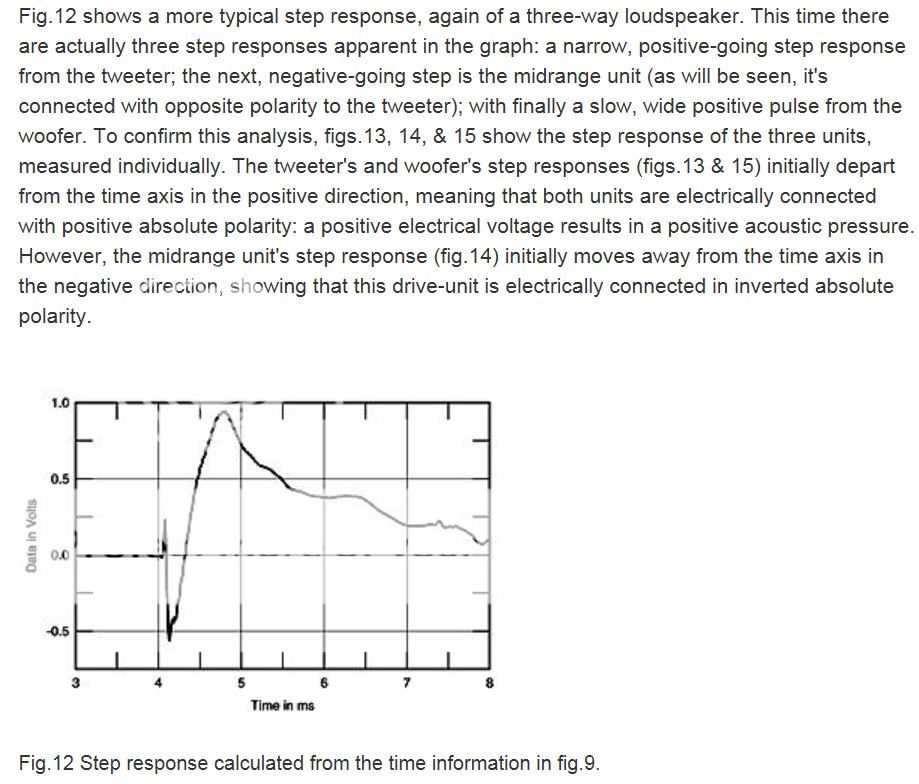
In my case, in post 91, the tweeter is the first narrow step response going in the negative direction.
Last edited:
Do you have any first hand data that proves this? I have first hand data that shows the so called filter ringing is so low in level as to be orders of magnitude inaudible:
Without the studies that try to correlate this stuff with what the ear/brain "hears" we can only make inferences. They prove nothing.
That you can download the files and try to get an individual baseline is good, but it is not a panacea without careful controls and test procedures. They can only be "anechdotal" in the big scheme.
That is not to say they are not useful.
What i was pointing out was that each approach comes with its own set of issues, and your particular chart showed pre-ringing.
Challenge: take your best passive XO speaker system and measure the step response at the LP and post the result and lets compare
If i knew what you meant i might be able to... what has the low pass got to do with anything? Or is that the point you want measured? It is the sme as the HP.
Besides, my best speaker level passive XO system is gone... but i bet it would do pretty good. 1st order series XO* with drivers capable well beyond the XO and C-C distances well within 1/4 wavelength so the drivers are essentially coincident.
* i bet there is a lot to be said for a well developed, simple 1st order series XO, with a convolution on the source to deal with niggly details.
dave
Regarding speaker step response, I'd rather design one having superior step characteristics using a passive xover than fix up a so-so speaker with DSP.
This reminds me a fair amount of the thread where one poster claims that one could get the best sound, including dynamics, with a pro-sound speaker tweaked out with step corrected DSP - this includes DSP to largely correct the disadvantages of passive xover components as well as response irregularities. Now, he definitely has a point there, but it certainly does not include the advantages of the KISS principle.
This reminds me a fair amount of the thread where one poster claims that one could get the best sound, including dynamics, with a pro-sound speaker tweaked out with step corrected DSP - this includes DSP to largely correct the disadvantages of passive xover components as well as response irregularities. Now, he definitely has a point there, but it certainly does not include the advantages of the KISS principle.
When buying an active the speaker is sized to match the amplifier running on full power.
Separates are usually matched by whoever buys the kit or whatever advice they get.
This can result in fried drivers.
I usually make sure my speakers will easily take max power from the amplifier.
Separates are usually matched by whoever buys the kit or whatever advice they get.
This can result in fried drivers.
I usually make sure my speakers will easily take max power from the amplifier.
OK I'm game... I've never looked at step response in REW before, but just pulled up a couple of measurements I had done about a year ago. I'm not going to say what they are, just ask what can be concluded from them 
Both were taken outside at a distance of about 1M using swept sine and presumably default settings. They are two quite different speakers.
Tony.
Both were taken outside at a distance of about 1M using swept sine and presumably default settings. They are two quite different speakers.
Tony.
Attachments
interesting.. I've never checked for DC on the output of my mic preamp... I probably should do so... neither of these speakers plays particulary deep.. the sharp dip is what has me a bit puzzled... as these speakers are quite different but both seem to have that dip (which makes me think it is the mic or mic preamp)...
I won't divulge more as yet. Will wait for some other possible interpretations, but there may be no point I guess if there is a problem with the measurement.
Tony.
I won't divulge more as yet. Will wait for some other possible interpretations, but there may be no point I guess if there is a problem with the measurement.
Tony.
It is not uncommon to have a "tooth" after the initial transient(s) but usually it is a blurred smaller copy of the initial transient and is caused by floor bounce. If there weren't the strange gap and some other unusual looking things I would guess the right one is from either a widebander or a transient corrected/improved multiway.
The left one looks like a conventional multiway.
But the gap is quite disturbing. Or are they backloaded or TML ?
Regards
Charles
The left one looks like a conventional multiway.
But the gap is quite disturbing. Or are they backloaded or TML ?
Regards
Charles
the sharp dip is what has me a bit puzzled.
Looks like an interference from a strong reflection. Hard floor or wall nearby?
Just toggle the box at upper left corner, choose %FS and you will see a more familiar view!
Thanks, a pebkac issue
Re posted in the correct format.. Even I can now interpret it to a degree!. I'm most impressed Charles that you picked the wide band based on that plot!
Tony.
Attachments
Last edited:
- Status
- This old topic is closed. If you want to reopen this topic, contact a moderator using the "Report Post" button.
- Home
- Loudspeakers
- Multi-Way
- Why I think actives are better.
